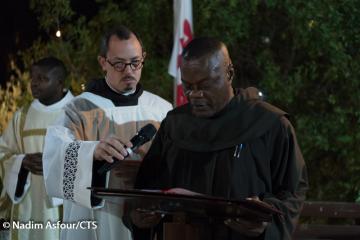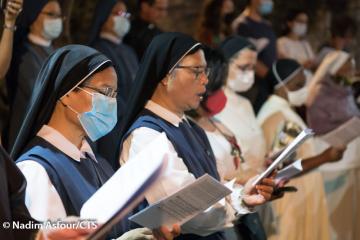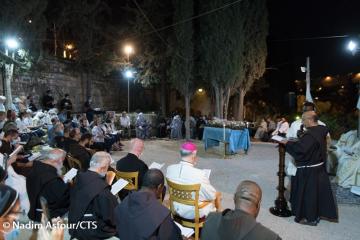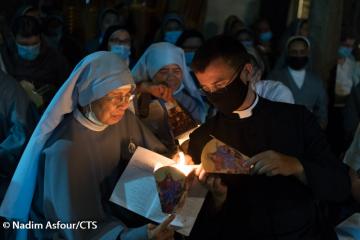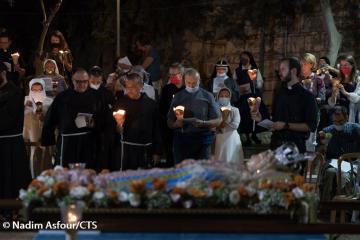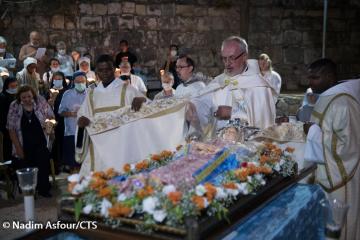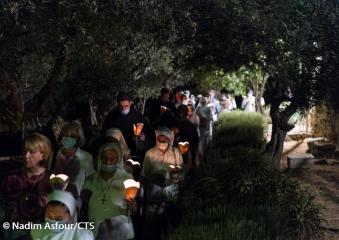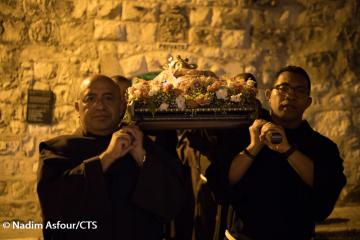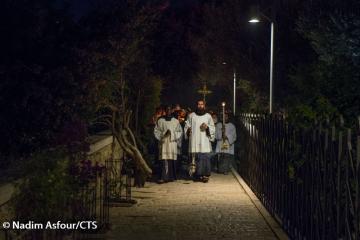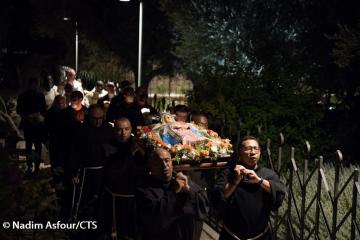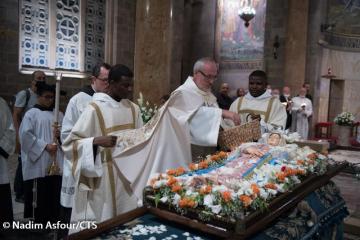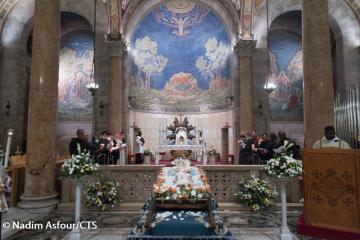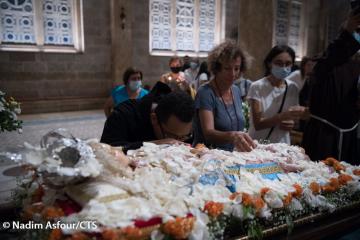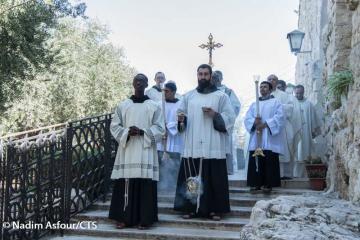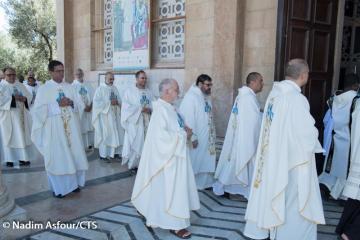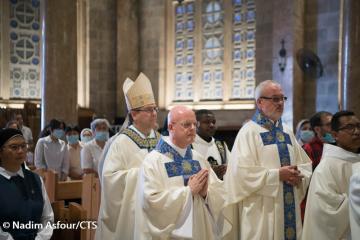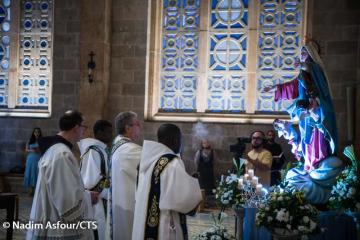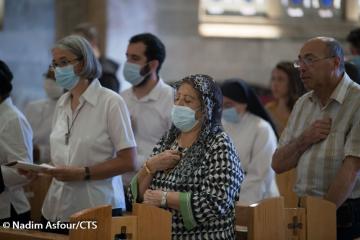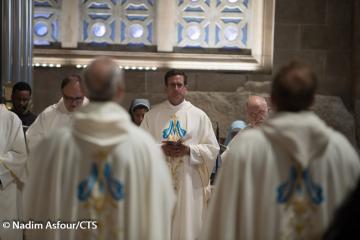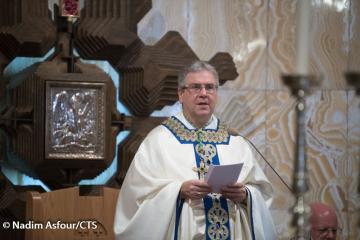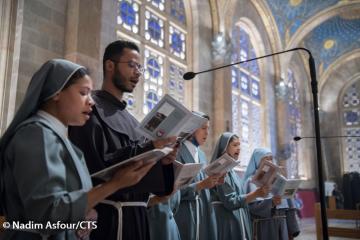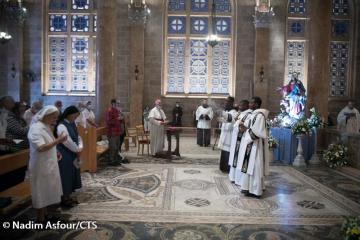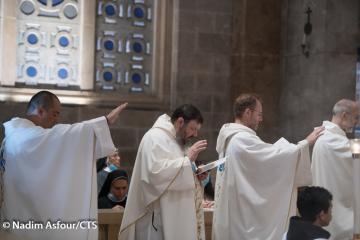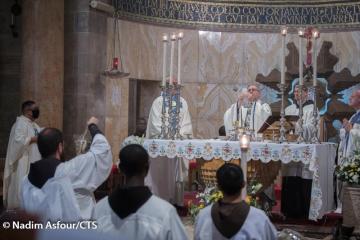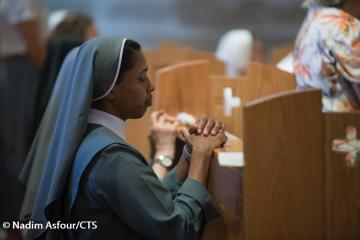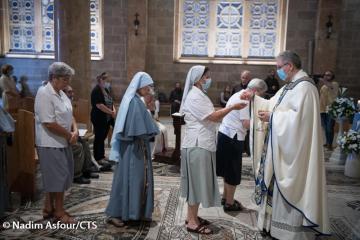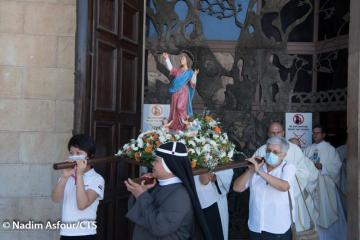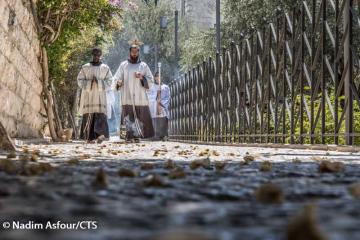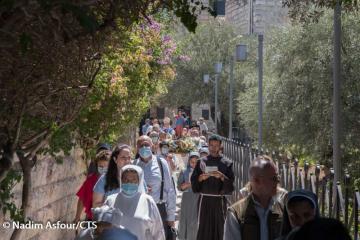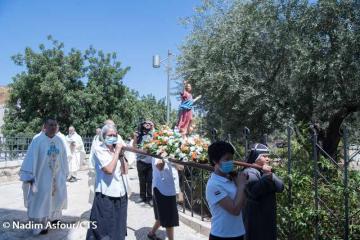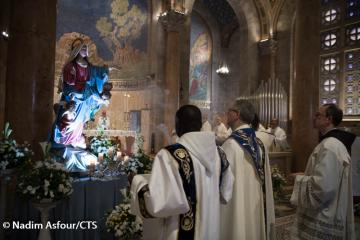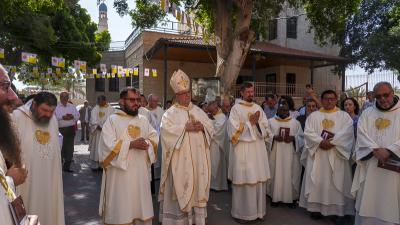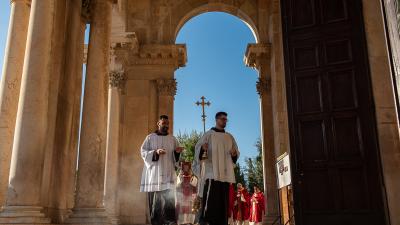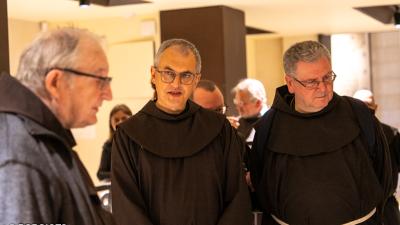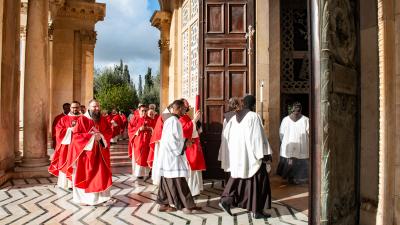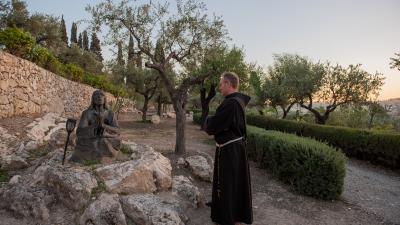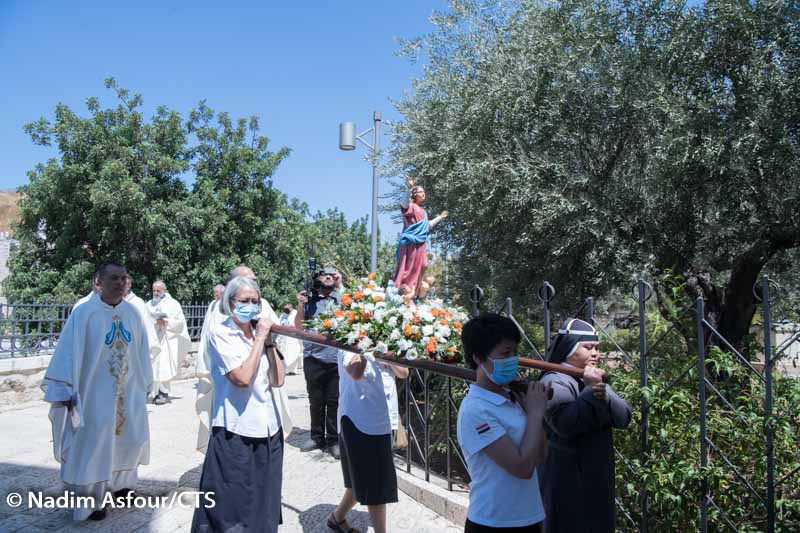
The apocryphal Gospels of the 3rd and 4th centuries say that the body of the Mother of God, Mary, was buried in the garden of Gethsemane, at the foot of the Mount of Olives in Jerusalem. Respecting this tradition, the celebrations for the feast of the Assumption of Mary began on 14August in the garden opposite the entrance to the Basilica of Gethsemane. Reading the passages from the Gospels and an apocryphal account, the Franciscan friars of the Custody of the Holy Land commemorated the life of the Blessed Virgin Mary until her “transit”, i.e. her earthly death, even though the actual place where this moment is remembered is the shrine of “DormitioMariae” on Mount Sion. The liturgy was presided by Fr. DobromirJasztal, the Custody’s vicar, in the presence of the Bishop Mons. GiacintoBoulosMarcuzzoandMons. Tomasz Grysa, Secretary of the Apostolic Delegation.
A statue of Mary sleeping was carried in a procession with lit torches and songs to the Virgin Mary to the Basilica of the Agony in Gethsemane.
The solemn mass of the feast of the Assumption of Mary, presided by the Custos of the Holy Land, Fr. Francesco Patton, was celebrated in the same church of Gethsemane the next morning, Sunday 15 August. “When we contemplate the assumption ofthe Blessed Virgin Mary to Heaven in body and soul, we contemplate the fact that Mary is already fully and personally participating in the new creation started by her son Jesus with his resurrection,” said the Custos in his homily. Mary, after having fallen asleep in the sleep of death, remains in the Tomb for three days, watched over and venerated by the apostles, until her body is taken to Heaven by the angels.
“This way Mary becomes – to use the language of the Apocalypse – a sign placed in Heaven for us. Mary is a sign we are invited to look at so that we too can make the pilgrimage of life with our heart full of hope,” said the Custos. “.[..] The Assumption of Mary is a sign for humanity distressed by the fear of death; it is a sign for the Church that is summoned to take part in full in the glory of Christ its Head; it is a sign that also reminds each one of us that we are not destined to go simply towards death but through death we are destined to take part in the new creation, in the resurrection, to live in God together with Christ Risen, his Mother and all the Saints of Heaven .” (The complete homily is here).
Fr. Benito José Choque, guardian of the Franciscan convent of Gethsemane, concluded the celebration with a prayer: “Today let us look at Mary elevated to Heaven in body and soul so that she can attract us all to her son to make us safe and walk in holiness and in peace towards Heaven.”
At the end of the mass, the statue of the Virgin Mary was taken in a procession in the garden of Gethsemane, amid prayers and the singing of the Litany of Loreto.
An important time of the feast of the Assumption celebrated in Jerusalem is that of the second vespers in the grotto of Gethsemane. This grotto – called the “Grotto of the Betrayal” or the “Grotto of the Apostles” – is believed to be the oldest part of Gethsemane and access to it is on the right of the entrance to the church of the Tomb of Mary.
The Franciscans, after the prayer of vespers, then went in pilgrimage to the church of the Tomb of Mary, where they were welcomed by the representatives of the Greek Orthodox and Armenian communities, as established by the Status Quo which regulates the life of the most important Holy Places. Singing hymns to the Virgin Mary, the friars of the Custody of the Holy Land knelt one by one in front of the tomb, to pay tribute to Mary, the mother of Jesus.
Beatrice Guarrera



